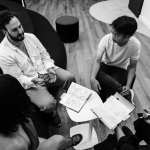
Don’t miss our Skill Seeker Series from Sept 30 – Oct 30.
Don’t miss our Skill Seeker Series from Sept 30 – Oct 30.
COMING SOON: Cybersecurity. Join the waitlist for an exclusive IT & Cybersecurity Workshop discount.
Corporate Strategies

Article
December 25, 2023

Article
December 23, 2023
Leading Through Change: Why it Pays to Reskill & Redeploy Workers Instead of Laying Them Off

Article
December 4, 2023
5 Ways to Build a Data-Driven Culture

Article
October 30, 2023
How Businesses Can Practice Ethical AI

Article
September 12, 2023
5 Reasons Why T-shaped Employees Are The Future of Work and How They Offer Businesses a Competitive Edge

Article
September 7, 2023
